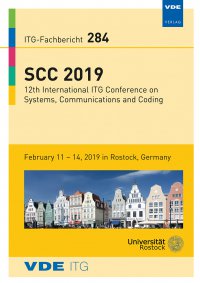Performance of Run-Length-Limited Codes in Visible-Light Communications
Konferenz: SCC 2019 - 12th International ITG Conference on Systems, Communications and Coding
11.02.2019 - 14.02.2019 in Rostock, Germany
doi:10.30420/454862036
Tagungsband: SCC 2019
Seiten: 6Sprache: EnglischTyp: PDF
Persönliche VDE-Mitglieder erhalten auf diesen Artikel 10% Rabatt
Autoren:
Dhannoon, Zaid; Fischer, Robert F. H. (Institut für Nachrichtentechnik, Universität Ulm, Ulm, Germany)
Inhalt:
Different from other communication systems, visible-light communication (VLC) aims at providing communication and illumination simultaneously. Utilizing run-length limited (RLL) line codes in VLC, a flicker-free and dimmable system can be achieved. The usual design of VLC according to the IEEE 802.15.7 standard restricts the RLL codes to provide a 50% brightness level by balancing the number of 0s and 1s in their codewords and then add the possibility of dimming control. The standard approach uses nonlinear block codes such as Manchester, 4B6B, and 8B10B codes which are also DC-balanced codes. As a new approach, it is possible to use trellis codes which are DC balanced but have better error-correction capability. In this paper, we specifically propose to use the DC-balanced code designed in [3]. This code can be seen as a modification of the 4B6B code to a 3B6B code which has a trellis representation and a better code distance than the standard RLL code. Through numerical simulations, the performance of this code is compared with others in terms of bit-error-ratio performance, spectral efficiency, and the capability of providing a 50% brightness level.


